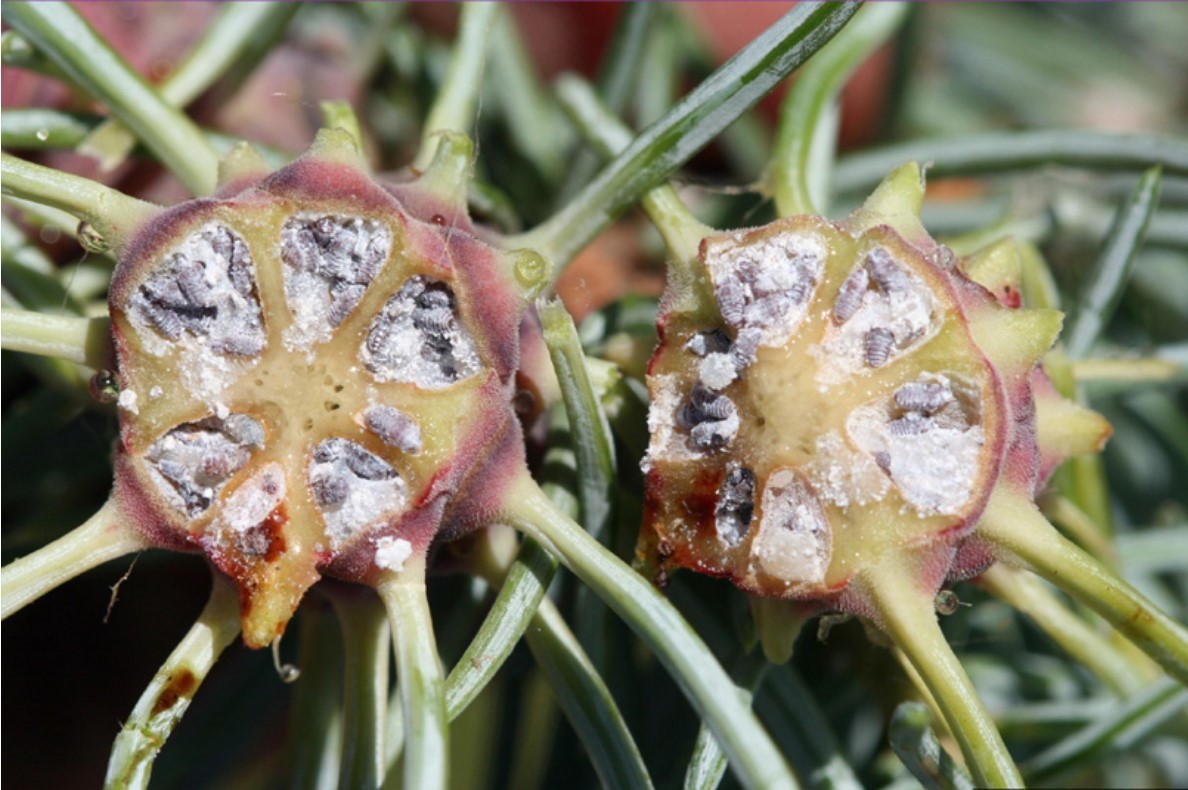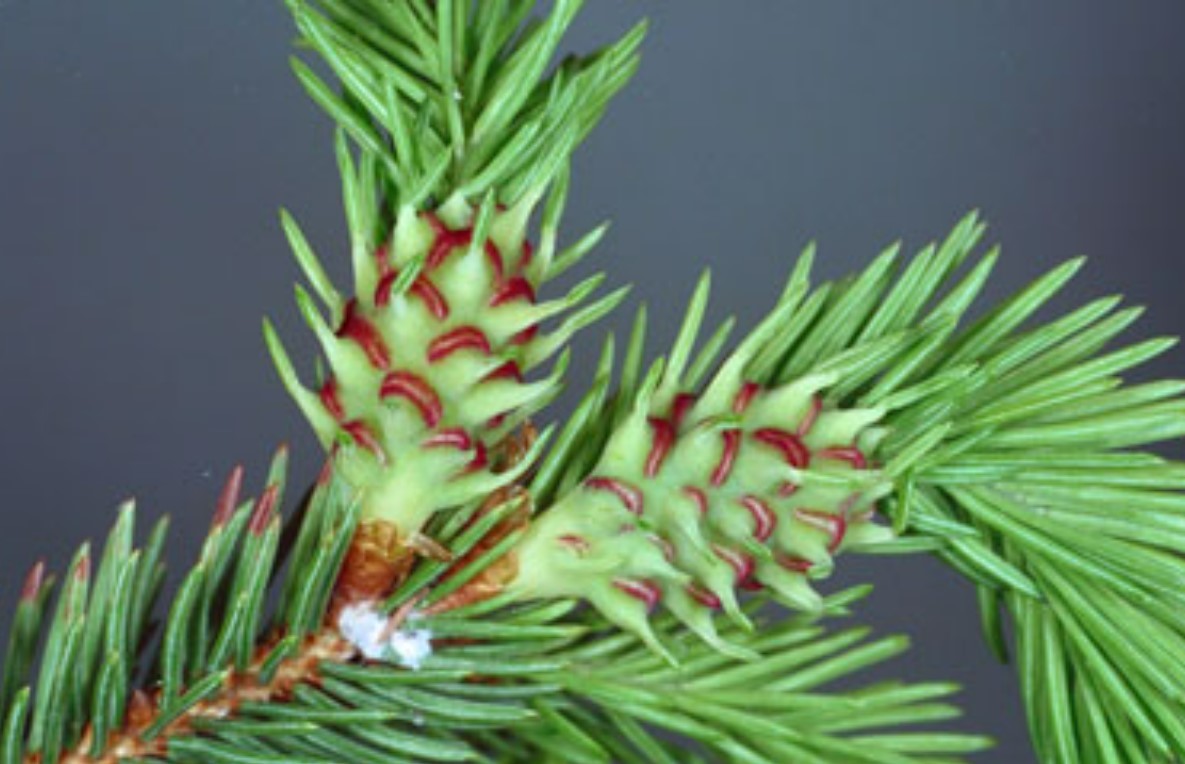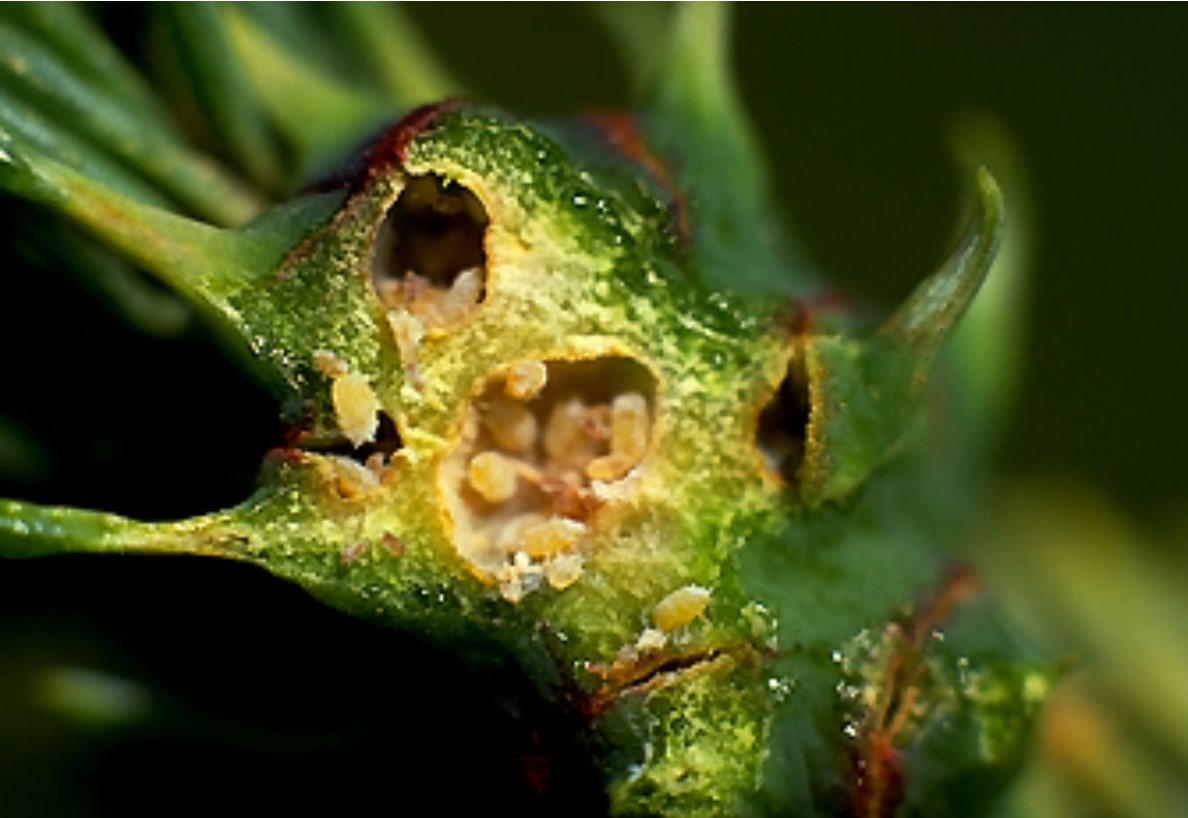Eastern spruce gall adelgid (Adelges abietis) and the Cooley spruce gall adelgid (Adelges cooleyi) feed on plant juices, causing an irritation that results in plant tissue developing into cone-like galls characteristic in form. Both adelgid and aphids belong to the same family Aphididae. They overwinter on spruce in nymph (eggs) stage.
In spring, they come out of dormancy, and move to new growth and feed excreting all enzyme which forms a gall (enclosing themselves). In late summer, the gall opens releasing adults with wings. Then they fly to a fir tree (alternate host – no major damage here). They come back to spruce to lay eggs and over winter.
Sign and Symptoms
In Spring, nymphs hatched near the buds sting the new needles. The needles enlarge and form a pineapple-shaped gall. The gall is initially light green in colour with red spots, turns brown and dries out at the end of the summer. The presence of galls causes distortions of the twigs and the crown ultimately becomes misshapen.
Prevention -What you can do on your own
Watering & Fertilizing
- Your trees can be kept healthy by watering and fertilizing. Click here to learn more about watering.
Control - What you need an arborist to do
Pesticide
- Apply Dormant Oil in spring.
- If infestation is severe, apply Safer’s soap in summer.



Tree Health Issues
Wondering about costs?

